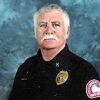The fire service has made great strides in identifying stress as it relates to firefighters on and off the job. Out of lessons gleaned from the enduring trauma of war to the repeated violence connected with domestic disputes, the fire service has become aware that our experiences as firefighters are on par with soldiers returning from battle and civilian victims of battery.
Firefighter PTSD awareness and action
While our awareness of post-traumatic stress disorder is at an all-time high, recognizing, defining and remedying its effects seem to be narrowed by geography, culture and occupation. Stigma, myths, misrepresentations and falsehoods follow even the most ardent supporters and certainly those desperate for solutions.
For firefighters facing the issue, it is not so much about acknowledging the hidden burden of PTSD, but rather recognizing the symptoms for themselves and, more importantly, identifying the treatments available for discrete connection.
In Part 1 of this two-part series, we’ll focus on common behavioral symptoms exhibited by firefighters. In Part 2, we’ll outline treatments that have proven effective in coping with PTSD.
Behavioral symptoms in firefighters
PTSD begins with exposure to a traumatic event or their culmination, either directly or as witnessed. Retention by memory and obsessive analysis grows into repeated exposure, constantly revealing the graphic details of the experience.
We think about the dreams of children fading away in our arms. A mother critically injured and worried about her husband. Homes lost, vehicles smashed and senseless loss of life.
The follow are four common symptoms exhibited by firefighters experiencing PTSD.
1. Re-experience
In the back bay of every firehouse, after every stressful alarm, the call is analyzed. For every ugly emergency, there is a firefighter dealing with it. While exact numbers are difficult to calculate, the International Association of Fire Fighters (IAFF), in its 2016 report, estimated that 20% of firefighters and paramedics exhibited symptoms of PTSD as compared to 3.5% for the general population.
For those suffering, PTSD is encountered and reinforced in every critique, criticism and even compliment experienced. Good or bad, the results of this compulsive, repetitive disorder are exhibited in nightmares, flashbacks, manic episodes and persistently sad memories.
Remembering traumatic events, regardless of manifestation, tends to fatigue a true perception of reality. This makes for a potentially unsafe, if not, dangerous situation.
2. Avoidance
A firefighter experiencing “out of bounds” stress avoids places, people and the materials that remind them of strong feelings – good or bad. Such personnel become short in temper, long in resentment and not temporary in anything. While the source of the stress may be obscure, the results are not.
Remembering lives saved and structures lost. Missing those absent and being irritated with those left. Misguided resentment leads to emotional ambivalence, the scab of PTSD.
There is a difference between being lonely and being alone. As the gap becomes larger, so does the problem.
3. Constant negativity
Constantly being negative starts with an adversarial view of the world and narrows, damagingly, to daily life, false alarms, paperwork and chores. Being 3 minutes late for an inspection is not OK. Tools need to be cleaned, checked and put away. Fast is not enough.
A lack of confidence damaged by disparagement deteriorates optimism, trust is eliminated by emotional fatigue, and dysfunction rules the day. Nothing is ever sufficient, more likely wholly unacceptable. Unexplained irritation creates a negative atmosphere.
4. Hyper-reactivity
Hyper-reactivity is the culmination of instantaneous reactions out of sync with the reality of the current situation. Such a condition can be in the moment and forgotten, or sporadic and increasing in its level of inappropriate reactivity.
Irritability by itself is a human emotion in line with the occupation. At its best, it increases the decision-making process under stress, but at a price. Like fast-twitch muscles, a little is good, but a lot cramps.
At its worst, irritability becomes hyper-reactivity when it deepens into increasing and ongoing stress due to past influences relating to present events. Easily startled by loud sounds and troubles sleeping (or even resting) when exhausted are signs of hyper-reactivity.
Symptom variability
Behavioral symptoms are not cut from stone; they vary in size and intensity as well as definition, often displayed in a completely opposite context. Mood changes can go from exhilaration in one moment to angry outbursts the next.
Symptoms can be exhibited physically as well as mentally. Firefighters with PTSD can have headaches, chills and sweats, panic attacks and even heart palpitations, all affecting performance and health.
PTSD cannot be considered a cookie-cutter disorder. As every individual is different in composition and experience, so are their signs and symptoms of PTSD. The key for any firefighter is to recognize that something may be wrong or getting worse, regardless of the effects or proximity to an incident or traumatic event.
Seeking help for PTSD
Recovery for firefighters requires a straightforward approach. Firefighters are actively looking for programs that are designed to gain traction in critical self-diagnosis while providing an honest commitment to receive needed help at whatever level.
The bottom line: Firefighters must believe they can get help without penalty.
For fire departments this means having the right culture and the appropriate policy and procedure for firefighter assistance. Senior officers should be educated in signs and symptoms and basic counseling philosophy and skills. In house and among their peers, compassion and confidentiality must lead any session initiated on behalf of a firefighter.
Departmental procedure needs to include a mechanism for confidential appointments with medical professionals, made privately and with no stigma, recognizing PTSD as a predictable consequence of the job.
Firefighters must believe in the protection of their department’s program, as the one commonality of PTSD is the feeling that your environment is essentially unsafe and potentially threatening.
Part 2: PTSD treatment for firefighters
Insight into behavioral symptoms has led to significant treatment options. Part 2 will detail the various treatments for firefighters experiencing PTSD.
The article, originally published in 2019, has been updated.
















